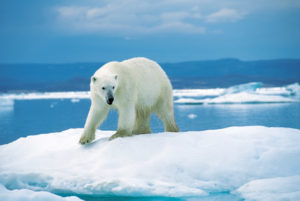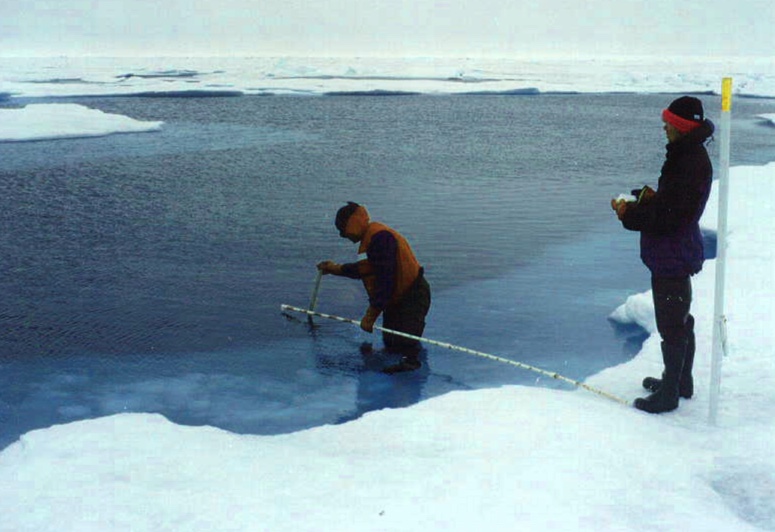February 27 has been designated as the annual International Polar Bear Day by the conservation organization, Polar Bears International. The day has been celebrated annually since 2012. The annual event seeks to educate the general public about the plight of polar bears globally and to encourage individuals to reduce their greenhouse gas emissions by turning down their heat and turning up their air conditioners. Polar Bears International lists its mission as seeking to “conserve polar bears and the sea ice they depend on.”

The polar bear (Ursus maritimus) is superbly adapted to living in the frigid conditions of the Arctic ecosystem. It is a marine species by definition (hence its scientific name), living on floating sea ice as its preferred habitat. Its main food is the ringed seal, which also lives on and around sea ice and is a fat-rich dietary source needed by bears. Polar bears are evolved from a common ancestor with the brown bear (grizzly bear). They grow to 9 feet in length and 1400 pounds in weight. During summer when sea ice disappears, polar bears must retreat to land. Food is insufficient for the bears on land, and they lose weight during the time they must spend off the ice.
Consequently, global warming is a primary threat to the survival of polar bears. Arctic sea ice has been disappearing rapidly, with the area of ice decreasing every summer and the length of time ice habitat is available to bears also decreasing. Each year, bears are spending longer on land, losing more weight, emerging in the fall in worse condition, and having smaller cubs that have higher post-natal mortality. Photographs of emaciated polar bears, trapped on tiny ice floes, are heart-rending reminders of their plight.

For these reasons, polar bears are receiving higher levels of protection around the world. The International Union for the Conservation of Nature (IUCN) has declared the species “vulnerable” to extinction. IUCN estimates that together the 19 distinct populations of polar bears around the Arctic region number about 22,000-31,000 individuals. However, detailed knowledge of their abundance is scarce, as the animals live in remote areas that are largely inaccessible to humans. The Convention on International Trade in Endangered Species (CITES), a treaty to which the U.S. is party, regulates global trade in the species, but still allows some harvest (learn more about CITES here).
In the United States, the polar bear is listed as a “threatened” species under the Endangered Species Act. It is also protected under the Marine Mammal Protection Act, which in general prohibits hunting and other forms of exploitation of polar bears. However, Native Americans in the Arctic region can harvest polar bears for subsistence uses and native handicrafts.
In recent years, the status of polar bear populations has become controversial. Overall, population numbers are up from a century ago, because of restrictions on over-exploitation. But worries over declining levels of sea ice have led many observers to speculate that polar bears are on a long-term slide toward extinction. Contrasting ideas suggest that declining sea ice will not be an issue for several polar bear generations to come. The competing views are possible because data are scarce, but the charistmatic polar bear continues to attract attention from advocacy groups and the press.
References:
CITES. CITES and Polar Bear. Available at: https://cites.org/eng/news/sg/2013/20131203_polar-bear.php. Accessed February 26, 2017.
Polar Bears International. The Life, Land, and Future of the Polar Bear. Available at: http://polarbearsinternational.org/. Accessed February 26, 2017.
U.S. Fish and Wildlife Service. 2013. U.S. Fish and Wildlife Service Announces Final Polar Bear Special Rule. Available at: https://www.fws.gov/alaska/external/newsroom/pdf/13-04.pdf?SiteName=FWS&Entity=PRAsset&SF_PRAsset_PRAssetID_EQ=131878&XSL=PressRelease&Cache=True. Accessed February 26, 2017.
Winter, Emery. 2022. It’s misleading to claim that polar bears are ‘thriving’ because of ‘increasing population’. Verify, December 29, 2022. Available at: https://www.verifythis.com/article/news/verify/environment-verify/polar-bear-population-thriving-population-rising-claim-misleading-misrepresents-data/536-0eb6146f-fb8c-437a-a97c-59625228187a. Accessed February 12, 2023.
World Widlife Fund. Polar bear status, distribution & population. Available at: http://wwf.panda.org/what_we_do/where_we_work/arctic/wildlife/polar_bear/population/. Accessed February 26, 2017.
